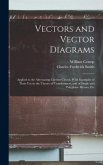This book explores the major historical phenomenon of the algebraization of mathematics in the second half of the 17th and 18th centuries, offering a broader understanding of the consolidation of analytic geometry and infinitesimal calculus as disciplines. The authors examine the external (intellectual, geographical, and political) factors that influenced these transformations and shed light on the process of acquisition and integration of analytical mathematics into traditional curricula. Drawing on new trends in historiography of science, this book emphasizes the importance of "dwarfs", that is mathematicians but also technicians, artisans, military personnel, engineers, and architects, often ignored or marginalized in traditional histories, in the circulation of original mathematical knowledge, and of peripheral countries such as Italy and Spain as important sites for the appropriation and production of such knowledge.
Hinweis: Dieser Artikel kann nur an eine deutsche Lieferadresse ausgeliefert werden.
Hinweis: Dieser Artikel kann nur an eine deutsche Lieferadresse ausgeliefert werden.








